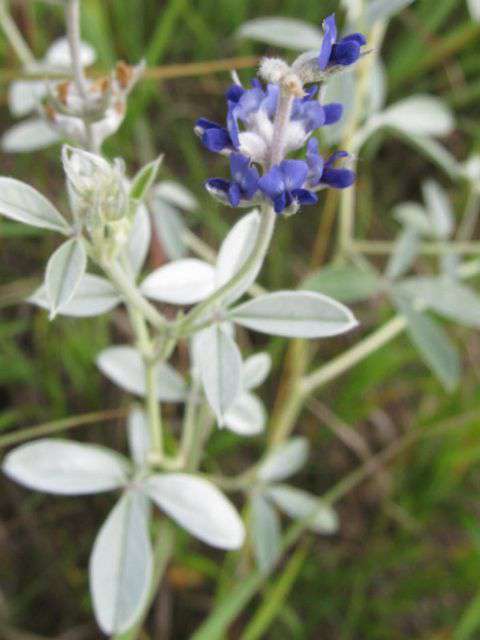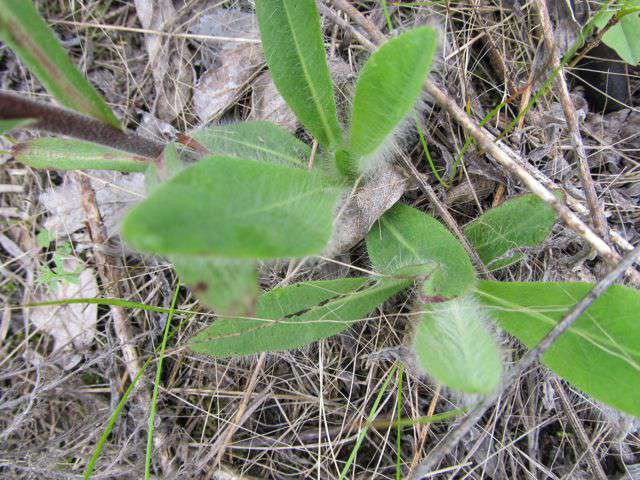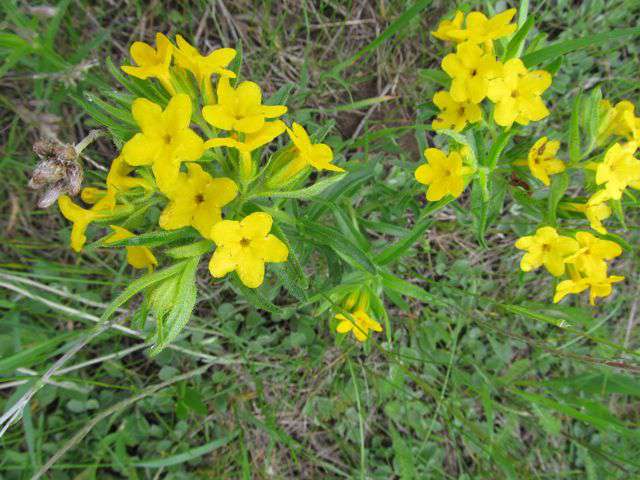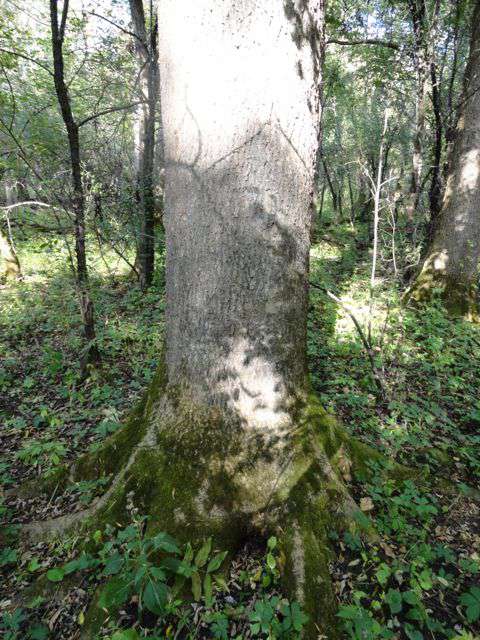The winter life of FMR ecologists

Silverleaf scurfpea, more commonly found in western Minnesota, is restricted to dry, open prairie.
Photo: Karen Schik/FMR

Reindeer moss is actually a lichen a mutualistic relationship between a fungus and algae. Commonly found in more boreal habitat, it is sensitive to air pollution.
Photo: Karen Schik/FMR

The long hairs on the leaves and stem identify this plant as long-bearded hawkweed. It has no state status, but is on the DNR watch list.
Photo: Karen Schik/FMR

Hairy puccoon is a very conservative species that is highly sensitive to soil disturbance. It is one of the few species that nurseries have not been able to propagate.
Photo: Karen Schik/FMR

The characteristic buttressed base and spreading surface roots of this black ash tree provide stability in the swampy soil. The surrounding ground cover is sparse, with abundant Canada Black Snakeroot.
Photo: Karen Schik/FMR
As ecological restoration activities slow down during the polar vortex of 2013-14, FMR ecologists gears are turning harder than ever to compile ecological management plans for multiple properties. Data on plants and animals, gathered during balmier times, are scrutinized, deciphered and compiled to help paint a greener picture of the now-monochromatic sites. Historic data are gathered on geology, soils, vegetation at the time of European settlement, and land uses of the past century or so. These past records and data on current conditions are synthesized to identify target plant communities and develop recommendations for management and restoration. While this means a lot of desk-time for outdoor-loving ecologists, the process is actually quite interesting and revealing, as new discoveries are made and insights gained.
One of the plans underway is for the 3M Cottage Grove Center, which encompasses over 600 acres. The site includes a 150-acre grassland that at first appeared to be all non-native plants, but turned out to have sizeable prairie patches with at least 30 native species, including numerous species with selective growing requirements such as silverleaf scurfpea, leadplant, prairie larkspur, and birds-foot trefoil. A breeding bird survey also revealed several species of greatest conservation need Bells vireo, field sparrow, grasshopper sparrow, and LOTS of eastern meadowlarks. The property provides a diversity of habitats, and the large size is especially valuable for wildlife. Other interesting native prairie remnants at the property were home to hairy puccoon, long-bearded hawkweed, and reindeer moss a lichen species that is sensitive to pollution. While common in more boreal parts of the state, this lichen is quite uncommon for the Twin Cities metro. FMR has worked with 3M for 10 years to manage one high quality prairie remnant, but the 2013 plan more than triples the previous project area. As part of the planning, FMR identified priority areas for expanding restoration efforts and that work was initiated in fall 2013.
Another ambitious endeavor has been a natural resource management plan for a 300-acre private property near Hampton, in Dakota County. FMR completed this plan for the Dakota County Farmland and Natural Areas Program (FNAP). Interesting features at this site included a 50-acre wet ash swamp, an uncommon plant community for southern Minnesota, and about 20 acres of fairly high quality seepage meadow. Located in a low plain between two steep bluff formations, groundwater is squeezed out from the bases of the slopes, providing the hydrology for the seepage swamp. Black ash (Fraxinus nigra), the dominant tree species, is uniquely adapted to this seepage environment and several specimens here were as large as 35 inches in diameter. These trees have very large primary roots that spread out a long distance from the trunk and grow on top of the soil surface, a characteristic that helps to stabilize them in soils that are saturated for half of the growing season or more. The ground under the tree canopy was filled with hummocks and rivulets formed from hundreds of years of seasonal groundwater movement. Growing on the hummocks was a variety of sedges and forbs, dominated by Canada black snakeroot. Unfortunately, this forest has been affected by a changing landscape, surrounded by agricultural fields and invaded by exotic species, so it has some big challenges. A future, major challenge addressed by the management plan will be the emerald ash borer (EAB), a small invasive insect that could potentially devastate this community. One benefit of the recent extremely low temperatures in Minnesota is that they likely killed off many EAB larvae.
Finally, a management plan is in progress for the Caponi Art Park in Eagan, MN, also part of the Dakota County FNAP. This site consists of about 46 acres of oak woodland and oak forest, much of it choked with buckthorn. Some areas were cleared of buckthorn several years ago and have responded well, now hosting some bur oak seedlings a rare sight in metro area woodlands! We will recommend removing of all of the buckthorn in the park, and following up with controlled burning, seeding, planting, protecting from deer browsing, and controlling exotic invasive plants.